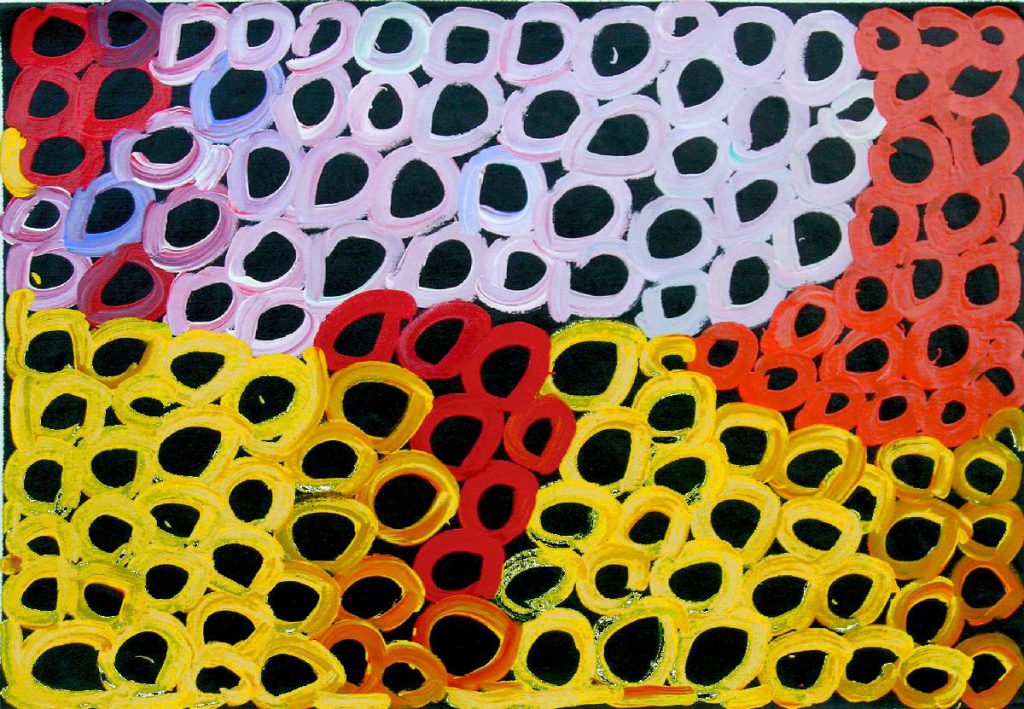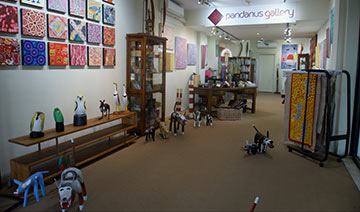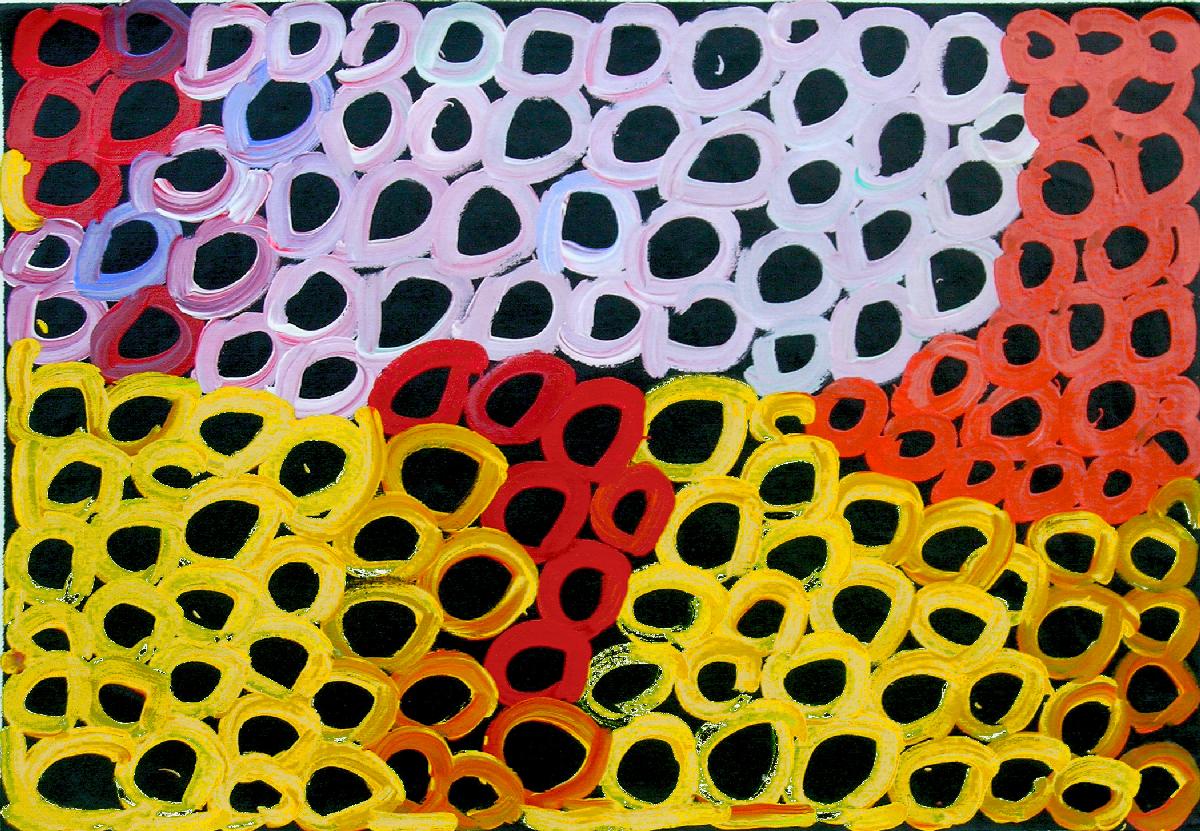A Superb Collection of Minni Pwerle Art For Sale
Pandanus Aboriginal Art Gallery offers artworks of the highest quality ranging from small keenly priced works to important investment pieces from artists across the country. An important aspect of this is documentary provenance that will accompany the artworks at the time of sale. Provenance is an important aspect in purchasing Aboriginal artworks, especially regarding highly collectable and investment quality works.
Provenance accompanies artworks that derive from all of the Aboriginal owned remote Art Centre across the country however, it is not the case with many artists who never painted through an Art Centre as such.
Minnie Pwerle was one of those artists. She was a senior law woman in the Utopia regions and was the sister-in-law of Emily Kame Kngwarreye. Minnie was a prolific painter whose methodology, inspiration and style are uniquely identifiable. She painted for galleries and individuals across the country and in many such cases documentary provenance is available. Where this is not available, expert advice is essential backed by Gallery guarantee.
Minnie painted collaboratively with family members from time to time and the above comments apply to works of this genesis.
Undoubtedly Minnie was one of the great characters and masterful painters within the female Aboriginal painting movement.
We hold a collection of superb Minnie Pwerle paintings.
Feel free to peruse the collection of Pwerle’s work, and get in touch with the friendly and knowledgeable team of staff at Pandanus Aboriginal Art to find out more.
The Work of Minnie Pwerle
Pwerle, who like Emily Kngwarre began painting late in life was from a family of renowned Indigenous artists that includes her sister-in-law, Emily Kame Kngwarreye, and daughter, Barbara Weir. Pwerle is noted for her spontaneous, bold style of painting that she delivered with great freedom and unconstrained flair as she moved across the canvas. Her style of painting was influenced by the gestural abstractionism style developed by Kngwarreye, which contrasted the notion of free painting with traditional designs and motifs.
Minnie was highly competitive with Emily who retained totemic responsibilities for the subject matter of most of her paintings, including the subject of ‘body painting’ that was associated with a traditional ceremony. For example, Minnie needed Emily’s approval to include that subject in her paintings which was the subject of heated discussions. Eventually, Emily gave her approval and this subject is behind many of Minnie’s greatest paintings.
Important characteristics of Minnie’s paintings are the passion for a subject matter and the almost limitless confidence and flair in execution. She painted in one continuous movement of mixing her colours on the brush as she worked across the canvas with mesmerising nonchalance, almost as if she was not physically present. She could paint many works in one sitting, all of which – when she was ‘on song’ – of the highest quality.
Many of these works are masterpieces of form, colour and movement that carry unique identifiable ‘signatures’ that can be identified and verified for provenance purposes.
Minnie’s main subject matter included Body Painting, Bush Melon and combinations thereof.
Without a doubt, Minnie was one of the great Aboriginal artists and has left a legacy for following generations. She also was a great character. Not long before she died in 2006, she exhibited a long multiple panel in the Telstra Aboriginal Art Awards. On her wall label describing the painting she had added the word ‘Motorcar’ between the words ‘Minnie’ and ‘Pwerle’ – suggesting her epic history might match that of the British Mini.
New South Wales, Art Gallery of South Australia, Queensland Art Gallery, and the National Gallery of Victoria.
Contact Us




